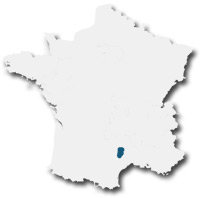Causses & Cévennes
 Sedentary sheep herds in the Causses
High-altitude summer pastures
Wooded pastures, grassland and heathland in lower Cevennes
Intensification of farmland
Woodlands progression and scrubs invasion
Predation by wolves
Maintaining subsidies
Land availability and access
Preservation of built heritage
Innovative regional procedures
Recognition of the quality of products
Collective approaches « Pasture Groups » and «Pasture land associations »
New method of diagnosis and advice for farmers
Development of direct distribution channels
Governance of the UNESCO site Causses and Cevennes
Collective approaches by breeders: Slaughterhouses
Eligibility of oak wood and chestnut pasture for CAP subsidies
Sedentary sheep herds in the Causses
High-altitude summer pastures
Wooded pastures, grassland and heathland in lower Cevennes
Intensification of farmland
Woodlands progression and scrubs invasion
Predation by wolves
Maintaining subsidies
Land availability and access
Preservation of built heritage
Innovative regional procedures
Recognition of the quality of products
Collective approaches « Pasture Groups » and «Pasture land associations »
New method of diagnosis and advice for farmers
Development of direct distribution channels
Governance of the UNESCO site Causses and Cevennes
Collective approaches by breeders: Slaughterhouses
Eligibility of oak wood and chestnut pasture for CAP subsidies

The Causses are vast limestone plateaus characterised by rough steppe-like pastures kept open by grazing. Crops are grown on deeper soils. The area has large farms which mainly practice dairy sheep farming, the milk of which is sold to produce Roquefort and others cheeses. Sheep and cattle production for mutton and beef are also common.
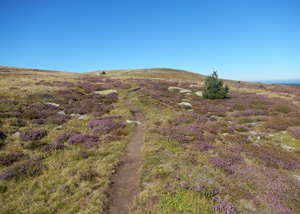
High Cevennes, occupying 3% of the area, are granite massifs characterised by large-scale rough grazing. They are managed as summer pastures by collective associations of breeders. Shepherds stay on the pastures in huts and move on foot (transhume) using ancient transhumance trails (called “drailles”).

Lower Cevennes are characterised by narrow ridges and deep valleys with mixed forest (conifers, chestnut, holm oak). Two main production types are mutton sheep and milking goats for cheeses (such as PDO Pelardon). The few pastoral farms often combine farming with agri-tourism and other types of farming. Terraces are used for sweet onion farming and pastures.
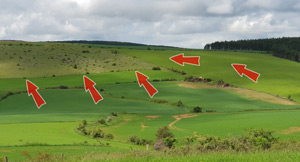
There is a trend to intensify agricultural practices, in particular in Causses and Mount Lozère. Some farming enterprises abandon rangelands, transform rangelands into grasslands or crops (through use of fertilizers and removal of stones), replace shepherds with fences, and switch from grazing their herds to feeding them on hay and concentrates.

In many areas there is a risk of the open landscape overgrowing and woodlands taking over. This stems from changing practices in animal husbandry– including declining pasture use, reduction in the total number of farms and farmers, and afforestation with conifers.
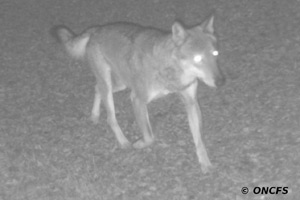
Breeders in the area are concerned by growing predation by wolves, which affects the herds, the shepherds’ and breeders’ work and, ultimately, the pastoral system as a whole. Current technical solutions and regulatory options that have been developed are not sufficient to reduce predation cases or impacts. A challenge is to find a balance between agriculture and nature in the area.
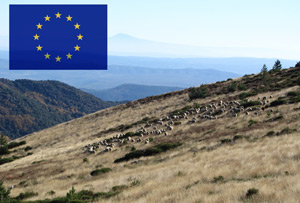
Public subsidies to pastoral farmers play a key role in the economies of pastoral farming and allow maintenance and development of measures beneficial for biodiversity. There is a risk of unfavourable changes in the future CAP and its national application.
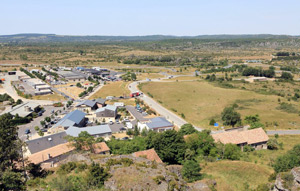
In some Cevennes valleys, grasslands are at risk due to urbanization. At a larger scale, there are challenges with availability and accessibility of land. Maintenance of transhumance trails can be problematic due to unclear ownership.
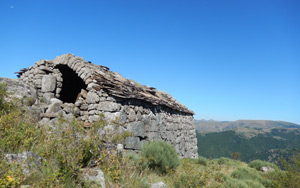
Many elements of the built heritage are considered important attributes of the area: shepherd shelters, herd paths, sheepfolds, artificial piles of stones, herd watering places, hydraulic networks, dew ponds and so on.There is a trend of these elements disappearing through abandonment and dilapidation, becoming hidden by overgrown vegetation, and being destroyed.
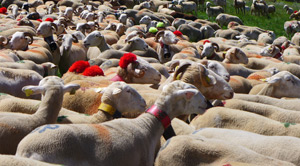
The collective approach for an inter-municipal pastoral pact is an initiative of farmers, researchers and local actors. It has officially established the local commitment to maintain and develop pastoral activity in the region. It was validated by the Community of Communes and the municipalities in 2016 with a first 3-year action plan.
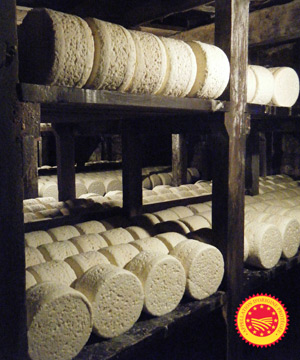
Numerous initiatives have facilitated creation of official labels denoting quality and origin of farm products. Examples include: PDO Pelardon (since 2000), PDO Roquefort (since 1925), Rouge Bœuf fermier d'Aubrac (since 1999), PGI Génisse Fleur d'Aubrac (since 2008), PGI agneau de Lozère ELOVEL (since 2008). These initiatives regulate the production practices and, therefore, support pastoral practices.

Several legislative tools support pastoralism (Pastoral Law of January 3rd, 1972). The collective groups have been formed to implement the law. “Pasture Groups”, later the Federation of Pastoral Groups, group together herds from different farms for collective management of transhumance and summer pastures. “Pasture Land Associations” allow coordinated management of plots owned by several landowners (no full description).
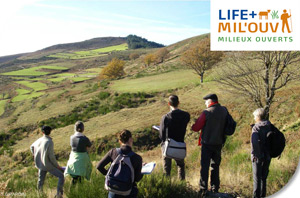
A pilot project to bring together pastoralists and ecologists to advise breeders was carried out from 2013-2017 via EU project Life+Mil'Ouv. With expert support, over 80 farms benefited from a new method of diagnosis of diverse pasture values. This approach is now continuing in different ways.
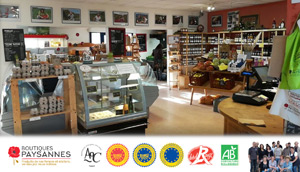
The development of direct distribution channels include examples of 1) “Agrilocal” - a platform to bring together suppliers of local products and public catering providers (e.g., schools, retirement homes) ensuring respect for the public procurement code (“Code des Marchés Publics”), and 2) “Boutiques paysannes” - collective farm shops.
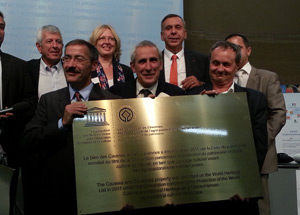
Specific governance for the management of this site has been put in place with 3 authorities : the Area Conference, the Guidance Committee, and the Technical Taskforce. The Technical Task force, “Entente Interdepartementale", is a public institution created by the 4 departments concerned and is in charge of coordinating actions to allow pastoral activities.
The farmers form a collective in order to take over a slaughterhouse that has been closed or that is threatened with closure. Several small local slaughterhouses have been saved in this way by breeders. Though small, such local slaughterhouses are essential for breeders in isolated mountain areas, particularly for direct sales that not only bring improved value to products but also create social links with consumers (no full description).
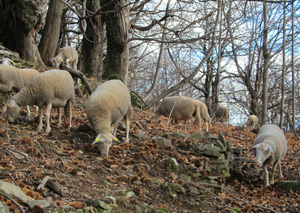
An action was taken by agricultural unions and public institutions in 2015 to allow an exemption for the eligibility of oak and chestnut woods grazed by sheep and goats. This recognition improves the payment of the land subsidy "Basic Payment Entitlement - PBO" (no full description).
The Causses & Cévennes are located in the South-East of Massif Central, Southern France. The territory covers about 300 000 ha. It comprises 3 different subunits: limestone plateaus (or causses) and gorges, high Cevennes, and Cevennes crests and valleys. It includes such diverse habitats as grassland steppe on a karst plateau, high-altitude grass and moorlands, peat soils and wetlands on a granite substrate. The area includes almost every type of pastoralism known in the Mediterranean, with the main practice being extensive agro-sylvo-pastoralism with sheep and goats. Transhumance endures in the region. Pastoralism activities and associated habitats are supported by the National Park and Regional Nature Park. Due to the outstanding example of the Mediterranean agropastoralism activities, the area was added to the World Heritage List of UNESCO in 2011. For more information on the area, see the Baseline Assessment
LA innovations:
- Innovative regional procedures
- Recognition of the quality of products
- Diagnosis and advice for breeders Life+MilOuv project
- Development of direct distribution channels
- Governance of the UNESCO site Causses and Cevennes
Links:
Innovations of relevance from other project areas
- Greece: Use of 3D mapping / GPS-tracking system
- Portugal: Mobile poultry
- Sweden: Mobile abattoir
- Ireland: Ireland: The Burren programme: A locally targeted hybrid AES
- Ireland: Ireland: Farming conservation awards
Other Downloads/Links:
- Baseline Assessment
- All innovation work in the LA
- Innovation report
- National language report from the innovation seminar
Contact person: , CEN L-R, France
(August 2018)

